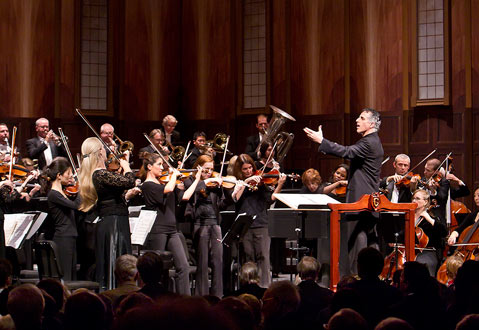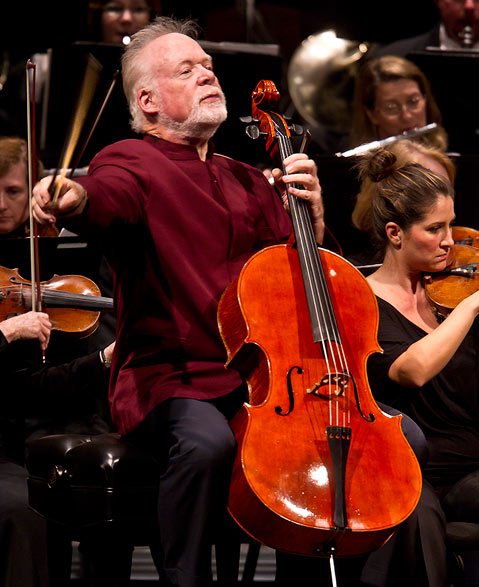Santa Barbara Symphony at the Granada
Symphony Plays Elgar, Berlioz on Saturday, October 22

The curtain didn’t go up — there wasn’t one — but the American flag came down for “The Star-Spangled Banner” at the opening of the 59th season of the Santa Barbara Symphony. Conductor Nir Kabaretti, looking rail thin but healthy, took control from the outset, leading the orchestra first through the national anthem and then into the Tromba Lontana of John Adams, a delightful piece that marries the throbbing repetitions of minimalism to the lyrical Americana of Aaron Copland. A short pause ensued as the band made way for guest artist Lynn Harrell, who took the stage with his cello held on high, wearing a deep burgundy jacket that made him look like he stepped off the cover of Sgt. Pepper’s Lonely Hearts Club Band. Harrell was there to play the Cello Concerto of Edward Elgar, one of the most dispiriting great works in the concert repertoire. Filled with the second thoughts and inhibitions of a great composer who had been sideswiped emotionally by the First World War, it’s not a tearjerker, or even particularly elegiac. The tone is more one of resignation, with somewhat mechanical instances of animation giving way, eventually, to a sullen withdrawal on the part of the soloist. Of course, Harrell, a consummate professional, and the orchestra, which was in fine form, did everything to tease out the beauties of structure and harmony in this dark piece, and the result was powerful, even if far from joyous. As a lovely gesture of solidarity with the audience, Harrell returned after several callbacks and played a solo encore before the intermission. The encore he chose was Chopin’s Nocturne in E-flat Major, Op. 9, No. 2. When the cellist asked the audience to please “imagine the piano part” the crowd was only too happy to oblige.

After intermission, the orchestra returned for the Symphonie Fantastique of Hector Berlioz. This highly programmatic piece is prized above all for its tonal variation — the sophisticated way that Berlioz expanded the vocabulary of orchestral music. It’s also clearly a conductor’s symphony, full of the stuff that gives maestros something expressive to do. You could be forgiven for finding the material somewhat disjointed. Without the composer’s notes identifying the various movements with specific activities, such as the “March to the Graveyard” and the “Witches’ Sabbath,” one would be hard put to discern the overall logic of the thing. But when the big bells chime and the tympanis roll, this Fantastique symphony succeeded in at least sounding fantastic. Reading between the lines of this program, there may have been some occult connection implied between Elgar’s blues and the opium-induced hallucinations of the Berlioz — there were fleeting melancholy sections of the symphony that recalled the concerto — but the overall effect was of two disparate parts seeking a larger whole. One potential direction to look would be toward the Adams, which was, in its way, the night’s most unalloyed delight. Off to another interesting year, the Santa Barbara Symphony promises to keep us all guessing — and listening closely — for many months to come.



